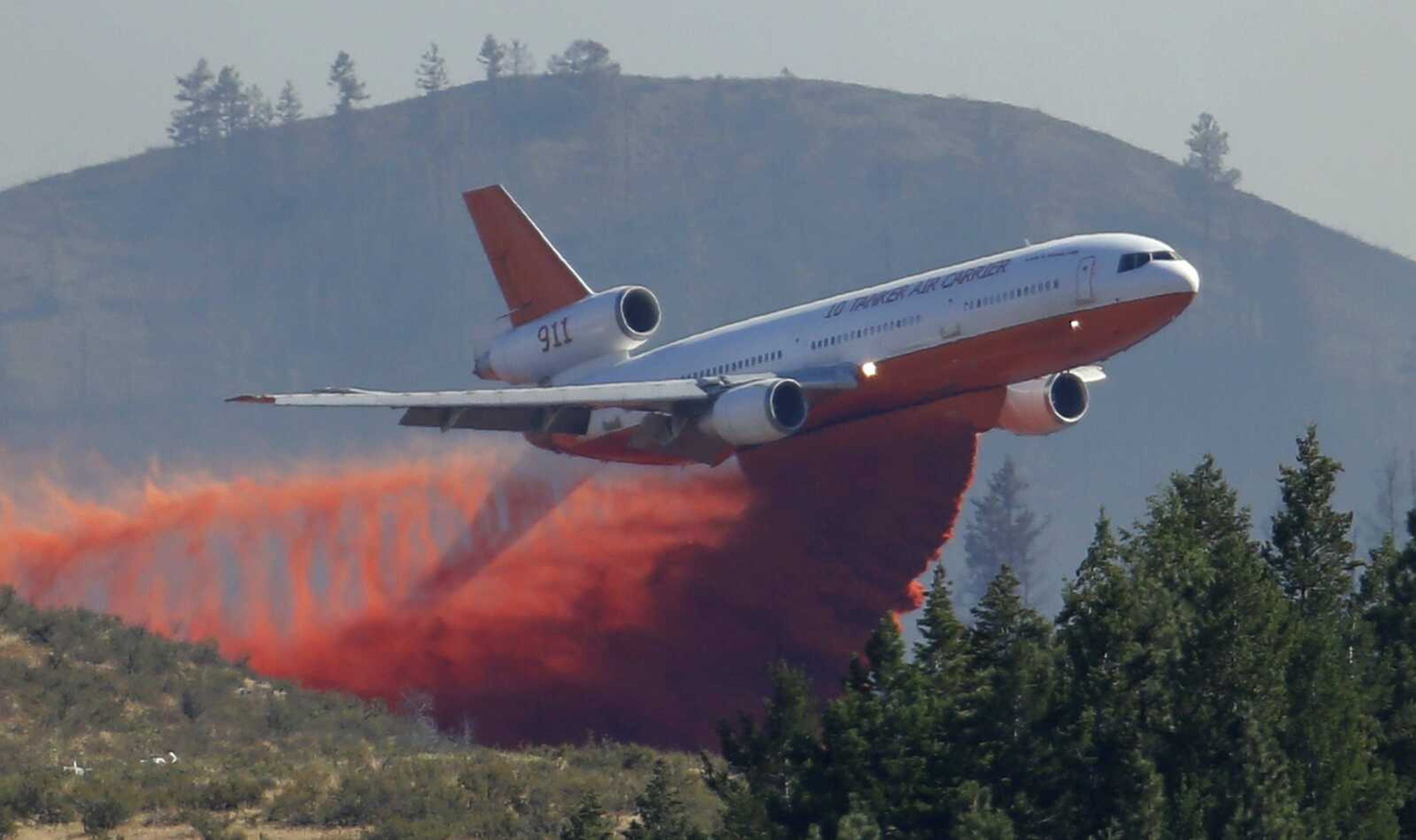BOISE, Idaho -- When Brian Cresto and his fellow firefighters fly toward a wildfire at just a few hundred feet off the ground, he's scouting for the best spot for them to land when they parachute down.
Lately, he's also been keeping an eye out for hobby drones that could take out their twin-engine propeller craft before it climbs to 1,500 feet, where the eight smokejumpers exit.
"It's dangerous anytime you drop an aircraft down to a certain level," said Cresto, a smokejumper with the U.S. Bureau of Land Management. "Drones are starting to be a part of that conversation."
Hobby drone ownership has spiked in recent years, and more and more of the devices have been spotted flying illegally over active wildfires, where they can endanger the airplanes and helicopters being used to battle the blazes.
It's a high-tech problem, and federal authorities are thinking high-tech to stop it: The U.S. Interior Department is working with drone makers and mapping companies to create a system that uses smartphone apps already on the market to alert drone fliers quickly to temporary flight restrictions at wildfires.
Initial attacks on a wildfire are crucial, but firefighting aircraft can't fly if a drone is in the restricted area because a collision could be catastrophic, officials said.
Retardant bombers and helicopters typically fly even lower than smokejumpers, at just above the trees or rooftops, and have little time to react in an emergency. A drone collision could take out an engine or break a windshield. The devices also can get sucked into a helicopter's intake or hit a rotor.
In just the past week, drone sightings have grounded aerial firefighters on three days at a Utah blaze that has forced the evacuation of 100 homes.
Utah Gov. Gary Herbert said those evacuations might have been avoided if not for the drones.
According to Federal Aviation Administration rules, hobby drones are limited to 400 feet above ground level and within sight of the operator. But internet videos show a stream of violators, including at wildfires.
"I've heard sometimes that at a wildfire, there might be 20, 30 guys out there flying their quadcopters," said Patrick Harper of the Meridian-based Idaho Drone Co.
Wildfires tend to attract spectators, including drone pilots who can use their devices to capture stunning aerial footage from a unique perspective.
Authorities across the U.S. recorded 20 incidents in which drones flew too close to wildfires last year, with more than half hindering firefighting efforts. It has happened again at least nine times so far this year.
Connect with the Southeast Missourian Newsroom:
For corrections to this story or other insights for the editor, click here. To submit a letter to the editor, click here. To learn about the Southeast Missourian’s AI Policy, click here.







